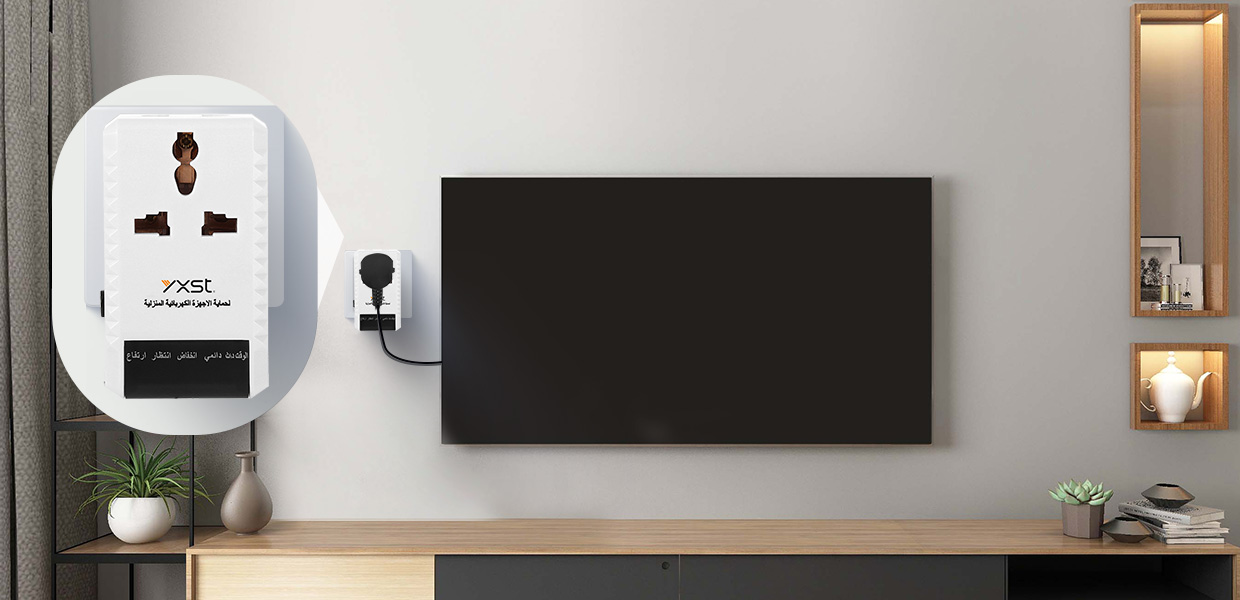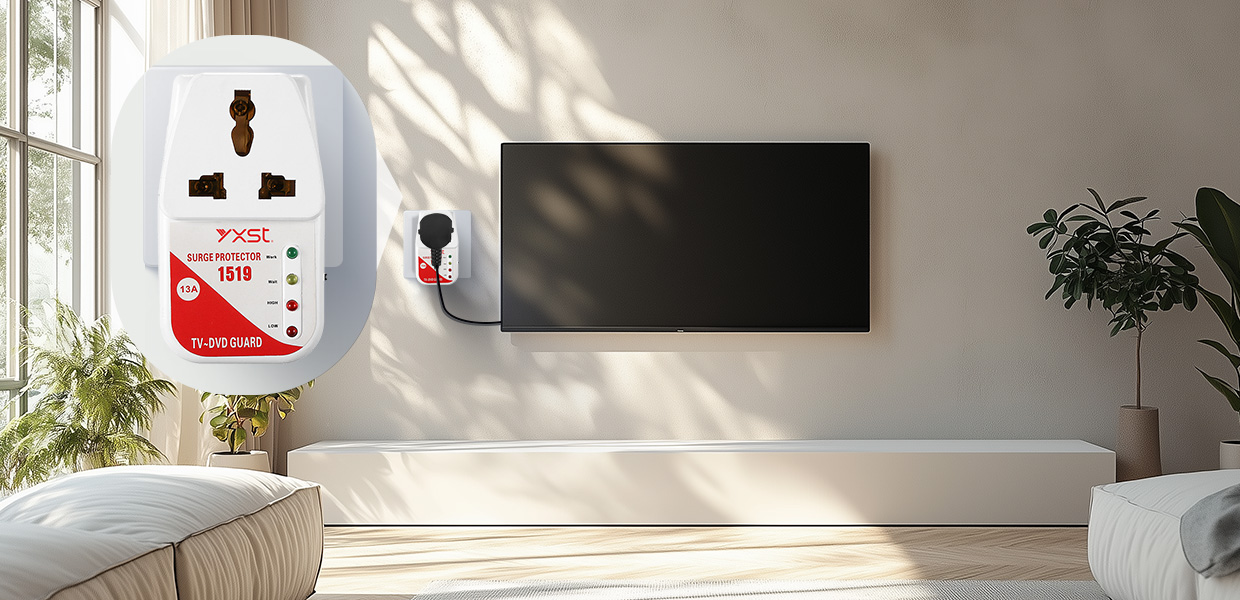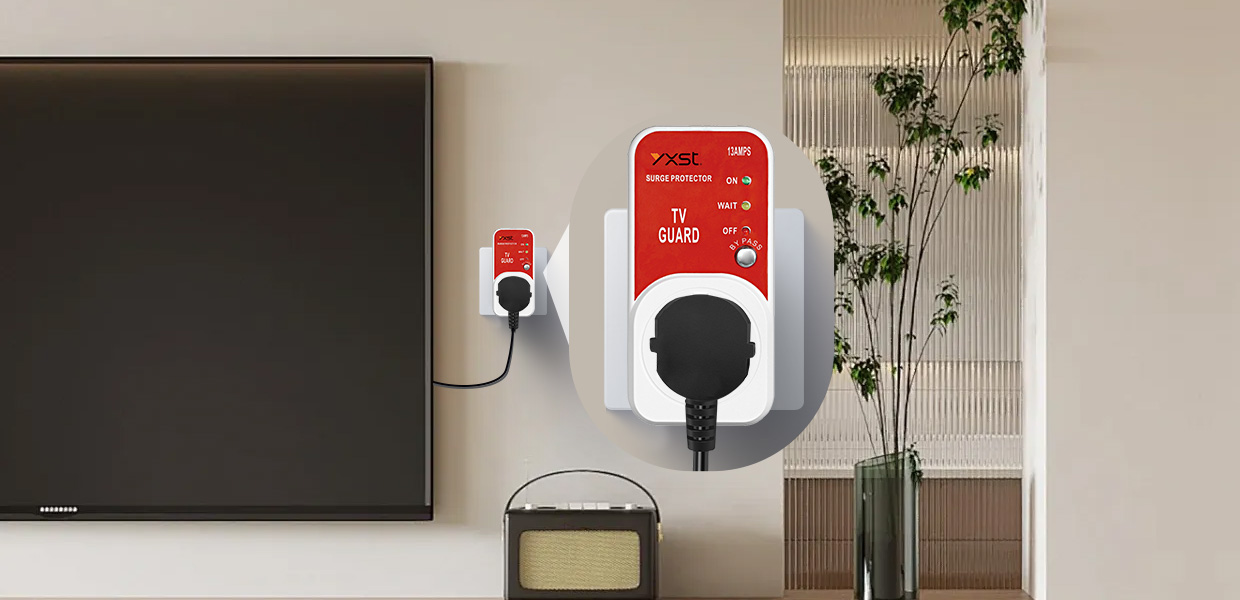How TV power protectors have become must-have at home
Date:2025-03-27 Click:666
The TV power protector builds an "electronic shield" for the device through the protection mechanism of voltage monitoring and surge interception. But why can it allow lightning current to "bypass"? Why do some protectors "strike" after being used for a long time? Should you unplug the plug on a thunderstorm day? This article will dismantle the working principle of this "power guardian" and answer the questions you care about.
Why does your TV need to wear a "bulletproof vest"?
When you spend tens of thousands of yuan to buy a 4K smart TV, have you ever thought it is exposed to invisible dangers? According to data from the State Grid, my country's residential areas experience an average of 17 monthly voltage fluctuations, and thunderstorm season is more likely to cause surges of more than 3,000 volts. These invisible killers are quietly shortening the life of the TV...
Unstable voltage: a chronic poison for home appliances
Case: Ms. Zhang's painful lesson
During the peak of electricity consumption in the summer of 2023, the voltage in a community dropped sharply to 160V, causing 32 TV motherboards to burn out, and the maintenance cost per person exceeded 2,000 yuan.
Long-term impact: aging of components accelerated by 3 times
Lightning strike: 0.01 second of destructive blow
Tests in the US UL laboratory show that a surge generated by a medium lightning strike is enough to break through 5 layers of circuit board protection.
TV Power Protector Working Principle Revealed
TV Power Protector is a device used to protect TV and other electronic devices from power anomalies (such as voltage fluctuations, surges, lightning strikes, etc.). Its core working principle is to ensure the safety of equipment by monitoring, regulating, and cutting off abnormal power. The following is a step-by-step analysis of its key technologies:
1. Voltage monitoring and overvoltage/undervoltage protection
Principle: The internal circuit monitors the input voltage in real-time. When the voltage exceeds the set threshold (such as higher than 255V or lower than 165V), the protector will automatically cut off the power supply.
Technical implementation: Use a voltage comparator or microcontroller to quickly determine whether the voltage is abnormal and trigger a relay to disconnect the circuit.
User value: Avoid voltage surges (such as lightning strikes) or sudden drops (such as power grid fluctuations) that cause the TV motherboard or power module to burnout.
2. Surge protection
Core component: Metal oxide varistor (MOV).
Working principle: MOV has a high impedance at normal voltage. When encountering a high-voltage surge (such as lightning induction), the impedance drops sharply, directing excess current to the ground wire, thereby protecting the device.
Response time: Far exceeds the response speed of the TV's internal circuit.
Limitations: MOV will age due to multiple surges, and the protector needs to be replaced regularly.
3. Filtering and anti-interference
Function: Filter out high-frequency noise, electromagnetic interference, and radio frequency interference in the power grid.
Implementation: Built-in LC filter or common mode choke to eliminate interference of clutter on TV signals and internal circuits.
Effect: Improve picture stability (reduce snowflakes) and sound clarity.
4. Overcurrent and short-circuit protection
Mechanism: When the current exceeds the rated value (such as a surge in current due to a short circuit in the TV), the fuse blows or the PTC resistance increases sharply, cutting off the circuit.
Advantages: Prevent fire risks and protect power lines.
Applicable scenarios: In areas where the voltage is unstable for a long time, avoid repeated restarts of the TV or overheating of components.
Answers to common user questions
Q1: Do I need to unplug the TV during a thunderstorm?A: The power protector can protect against inductive lightning (small surges), but direct lightning has great energy. It is recommended to unplug the plug and use a protector for double insurance.
Q2: Does the protector itself consume power?
A: The standby power consumption is extremely low (about 0.5-2W), mainly from the indicator light and monitoring circuit.
Q3: How to determine whether the protector has failed?
A: Observe the indicator light regularly (normally green). If the MOV is aged or the fuse is blown, the indicator light will turn red/extinguish.
Through a multi-level protection mechanism, TV Power Protector can significantly extend the life of the TV and reduce the risk of failure, making it a practical investment in home electrical safety.




